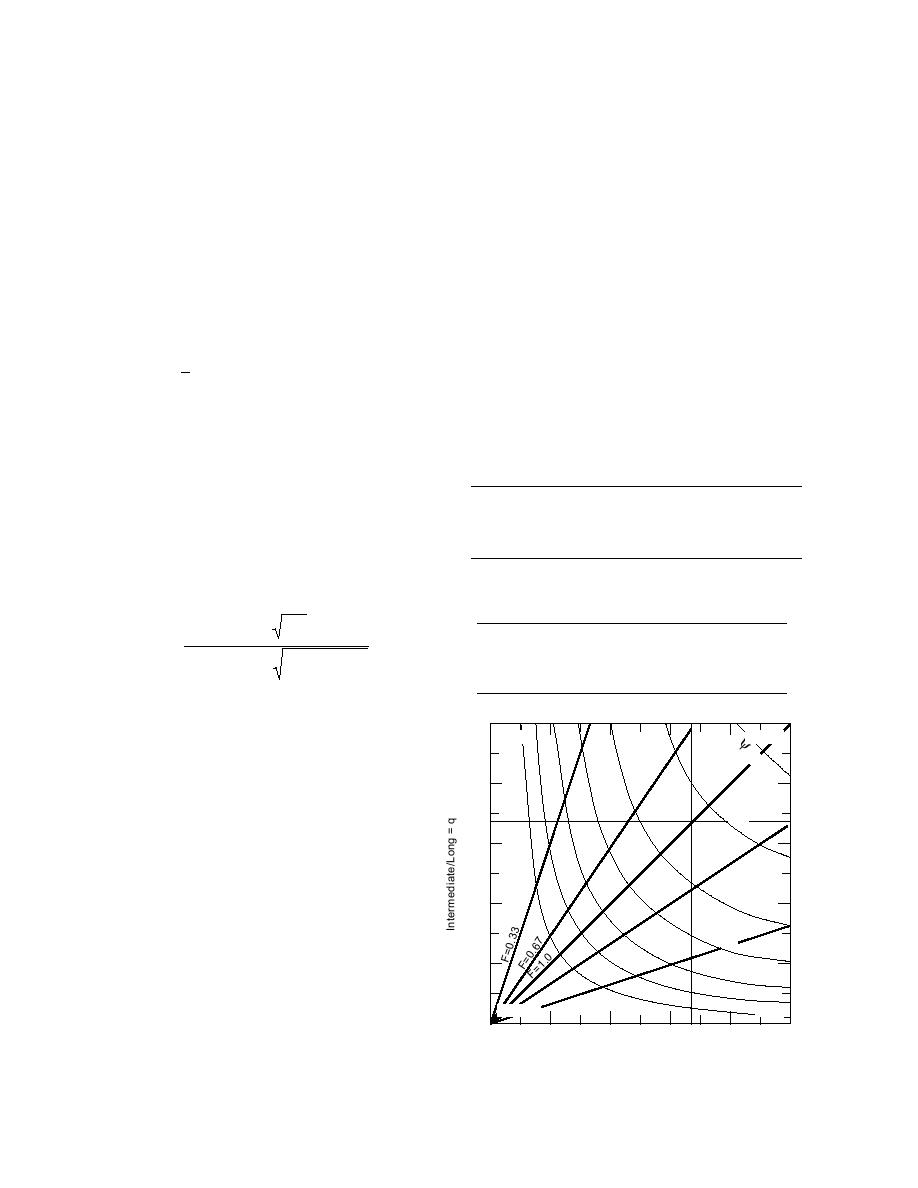
elongated using the criteria shown in Table 2.
surement of the aggregate dimensions (shortest,
These criteria were developed basically for iden-
intermediate, and longest lengths). Based on
tifying flat and elongated aggregate and not as a
these lengths, the shape of the aggregate is quan-
tified in terms of both the flatness and elongation
general tool for describing the shape of coarse ag-
ratios or by the shape factor. The flatness ratio (p)
gregates.
is the ratio of the short length to intermediate
length, and the elongation ratio (q) is the ratio of
Description of roundness
the intermediate length to the longest length.
Roundness, as opposed to shape, has to do
An alternate method for describing the shape
with whether the edges are sharp or round
of the aggregate involves the shape factor (F) and
(Wadell 1932). The roundness of a particle is sen-
sphericity (ψ) of the aggregate particles. The
sitive to abrasion and wear to which aggregates
shape factor (F) is the ratio of the elongation ratio
are subjected during processing and construc-
(q) and the flatness ratio (p), i.e.,
tion. The process for determining the roundness
of a particle is fairly complex and involves tracing
p
a magnified image of the particle. An inscribed
F= .
q
circle is drawn within the aggregate tracing and
the radius of the circle is determined. The radii of
A shape factor equal to 1 represents a rounded
or cubic aggregate. Smaller than 1, the particle
tends towards being elongated and thin.
Table 1. Description of aggregate shape.
Blade-shaped materials have a shape factor
Aggregate shape
Description
greater than 1.
The sphericity (ψ) is defined as the ratio of
Disc
Slabby in appearance, but not elongated
Equidimensional
Neither slabby appearance nor elongated
the surface area of a sphere having the same
Blade
Slabby appearance
volume as the particle in question to the sur-
Rod
Elongated, but not slabby in appearance
face area of the particle. The sphericity can also
be determined from the flatness and elonga-
Table 2. Criteria for describing particle shape.
tion ratios as shown below:
Shape
Description
12.8 3 p2q
Ψ=
Flat
Particles with width/thickness > 3
.
(
)
Elongated
Particles with length/width > 3
1 + p(1 + q) + 6 1 + p2 1 + q2
Flat and elongated
Particles that meet criteria for both
flat and elongated
The shape factor, p, q, and sphericity are used
to classify the aggregate as disc, equidimen-
1.0
sional, blade- or rod-shaped using Figure 1.
DISC
CUBIC
=
Equidimensional can mean either cubic or
0.
95
round. The definitions for disc, equidimen-
0.8
sional, blade, and rod, based on descriptions
ψ
by Lees (1964) and Barksdale and Itani (1994),
=
0.
are presented in Table 1.
9
0.6
Barksdale and Itani (1994), in their study on
the effect of shape, angularity, and roughness
of aggregates on base course performance,
ψ=
used this form of shape description for charac-
0.4
0.8
terizing the five aggregates they used. The
ψ=
granite gneiss, limestone, shale, quartzite, and
0.7
river gravel turned out to be disc, blade, blade,
ψ =0
0.2
blade, and equidimensional in shape, respec-
.5
.6
=1
ψ = 0.5
F
tively. Additional discussion on the results of
.0
ψ = 0.4
F=3
his study is presented later in this report.
BLADE
ROD
0.0
ASTM D 2488-90 (1996), Standard Practice for
0.0
0.2
0.4
0.6
0.8
1.0
Description and Identification of Soils (Visual-
Short/Intermediate = p
Manual Procedure), describes the shape of ag-
Figure 1. Aggregate classification chart.
gregates as either flat or elongated, or flat and
2



 Previous Page
Previous Page
